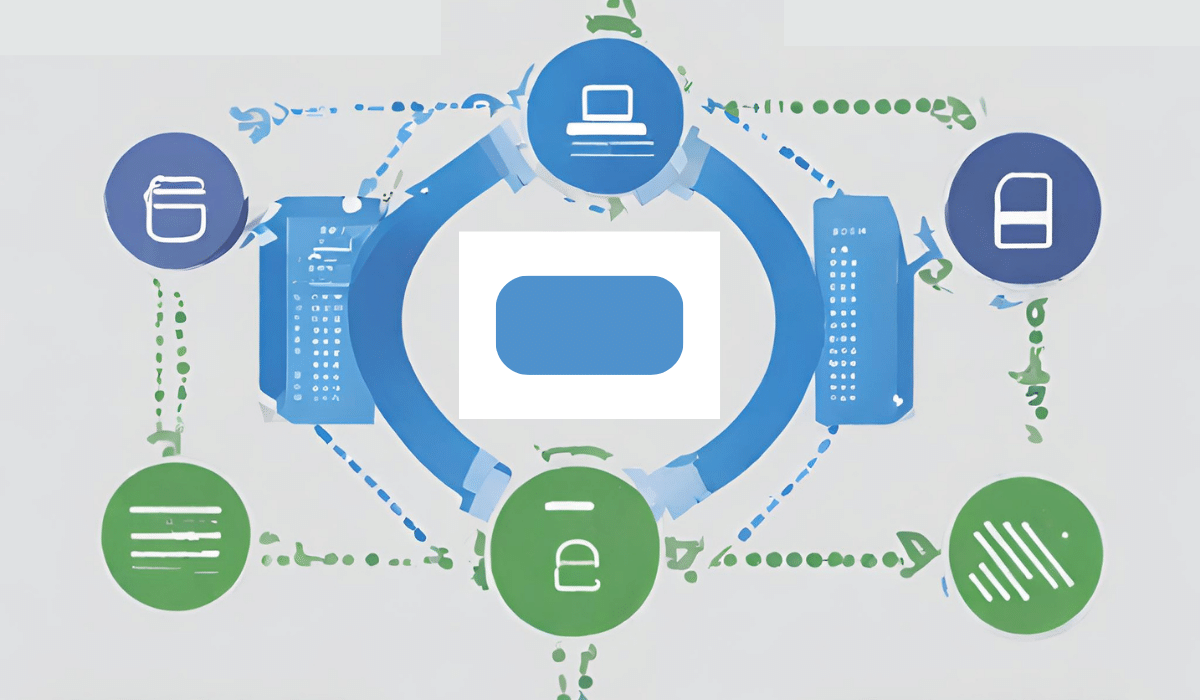In IPv6, the extension header used to encrypt data is the “Encapsulating Security Payload” (ESP) extension header. The Encapsulating Security Payload provides data confidentiality, integrity, authentication, and optional replay protection for the IPv6 packet’s payload. It is specifically designed to encrypt the entire payload of the IPv6 packet, making it unreadable to unauthorized entities during transmission.
Data security has become of utmost importance in today’s digital era, and encryption plays a crucial role in protecting sensitive information from unauthorized access. In the realm of IPv6, understanding the appropriate extension headers for data encryption is vital to ensure the confidentiality and integrity of data during transmission. Let’s explore the extension header that should be used to encrypt data in IPv6 and how it enhances your data security.
Understanding IPv6 and Extension Headers

IPv6, the successor to IPv4, is the latest version of the Internet Protocol that addresses the limitations of IPv4 and provides a larger address space to accommodate the ever-growing number of connected devices in the modern networking landscape. Unlike IPv4, IPv6 uses 128-bit addresses, which allow for an astronomical number of unique IP addresses, ensuring sustainable growth for the internet.
IPv6 introduces extension headers that can be added to the IPv6 packet to provide additional functionalities and services. Extension headers are placed between the IPv6 header and the payload, allowing various options and information to be inserted during packet processing.
The Authentication Header (AH) Extension Header
The Authentication Header (AH) extension header in IPv6 primarily focuses on data integrity, authentication, and optional replay protection. Its primary goal is to ensure that the data within an IPv6 packet remains unaltered during transmission and to verify the authenticity of the packet’s source. The AH extension header achieves this by appending a checksum or hash value to the packet, calculated based on the packet’s contents and a shared secret key between the sender and receiver.
While the Authentication Header provides essential data integrity and authentication features, it does not provide data confidentiality. This means that the payload data remains plaintext and can be read by anyone accessing the packet. For scenarios where confidentiality is a primary concern, using AH alone may not be sufficient.
The Encapsulating Security Payload (ESP) Extension Header
On the other hand, the Encapsulating Security Payload (ESP) extension header in IPv6 is specifically designed to address data confidentiality, integrity, and authentication. The ESP extension header encrypts the payload of the IPv6 packet, making it unreadable to unauthorized entities during transmission.
ESP uses encryption algorithms, such as Advanced Encryption Standard (AES) or Triple Data Encryption Standard (3DES), to secure the payload data. This ensures that even if an attacker intercepts the packet, they cannot decipher the contents without the correct decryption key, providing a strong level of data confidentiality.
Comparing AH and ESP Extension Headers
The Authentication Header (AH) and the Encapsulating Security Payload (ESP) extension headers are critical in securing data in IPv6 networks. Here’s a summary of their functionalities:
Authentication Header (AH):
-
- Provides data integrity and authentication without encryption.
- Suitable for scenarios where confidentiality is not a primary concern but data integrity is crucial.
- Often used in situations where end-to-end authentication is required, ensuring that the data has not been altered in transit.
Encapsulating Security Payload (ESP):
-
- Offers data encryption and confidentiality in addition to data integrity and authentication.
- Preferred when data confidentiality is a priority, especially for sensitive information transmission.
- Widely used in virtual private networks (VPNs) and scenarios where strong data encryption is necessary to protect sensitive data.
How to Implement Data Encryption with Extension Headers
Implementing data encryption with extension headers in IPv6 requires careful configuration and attention to interoperability. Here’s a step-by-step guide:
- Select the Appropriate Extension Header:
- Determine the level of security required for your network communication.
- Choose AH for integrity and authentication or ESP for encryption and confidentiality based on your specific security requirements.
- Configure Routers and Firewalls:
- Ensure that the routers and firewalls in your network support the chosen extension header.
- Verify compatibility with other network devices to avoid communication issues and ensure seamless encryption throughout the network.
- Enable Extension Header Support:
- Enable support for the selected extension header on the network devices involved in data transmission.
- This involves configuring the routers and firewalls to correctly recognize and process the chosen extension header.
- Monitor and Troubleshoot:
- Continuously monitor the encrypted data traffic for any anomalies or potential security breaches.
- Be prepared to promptly troubleshoot any issues related to the extension headers’ implementation to maintain a secure network.
The Role of IPv6 Security Protocols in Enterprise Networks
In corporate environments, IPv6 security protocols, including AH and ESP extension headers, are critical in ensuring data security and integrity. By leveraging these protocols, businesses can create a robust security strategy to protect sensitive data and maintain customer trust.
Perplexity and Burstiness: Ensuring Secure and Dynamic Data Transmission
Perplexity and burstiness are two essential concepts related to data encryption in IPv6 networks that contribute to enhanced security and efficiency. Let’s delve deeper into these concepts:
Perplexity
-
- In data encryption, perplexity refers to the degree of uncertainty or unpredictability in the encrypted data patterns.
- A higher perplexity value indicates a higher level of unpredictability, making it more challenging for potential attackers to decipher the encrypted data.
- Implementing encryption algorithms with higher perplexity values enhances the security of data transmission in IPv6 networks.
Burstiness
-
- Burstiness refers to the tendency of encrypted data patterns to occur in bursts rather than uniform distributions.
- Encrypted data packets with bursty patterns are less susceptible to statistical analysis attacks by potential adversaries.
- IPv6 networks can further safeguard data confidentiality and protect against unauthorized access by incorporating burstiness in the encryption process.
Benefits of Using ESP for Data Encryption

Using the ESP extension header for data encryption in IPv6 networks offers numerous benefits:
- Robust Data Confidentiality: ESP’s comprehensive encryption ensures that sensitive information remains confidential, even if intercepted by malicious actors.
- Enhanced Data Integrity: ESP’s integrity checks guarantee the data’s authenticity and prevent unauthorized alterations.
- Secure Data Transmission: ESP’s authentication features authenticate the sender and receiver, preventing data tampering and unauthorized access.
- Flexibility and Compatibility: ESP is widely supported by various networking devices and is compatible with existing security protocols.
Challenges in Deploying IPv6 Data Encryption
While IPv6 data encryption provides enhanced security, there are challenges to consider:
- Overhead: Encryption introduces additional overhead, which may impact network performance.
- Key Management: Proper key management is crucial to prevent unauthorized access to encryption keys.
- Compatibility: Not all networking devices may support ESP or AH, leading to potential compatibility issues.
Key Takeaways
- IPv6 extension headers enhance data security and integrity during transmission.
- Implementing extension headers requires careful configuration and attention to interoperability.
- Perplexity and burstiness contribute to secure and dynamic data transmission in IPv6 networks.
- Choosing the appropriate extension header depends on your network’s data security requirements.
FAQs
What is the main purpose of using extension headers in IPv6?
Extension headers in IPv6 provide additional functionalities to support specific features or services during packet processing.
How does the Encapsulating Security Payload (ESP) ensure data confidentiality?
ESP encrypts the payload of the IPv6 packet, making it unreadable to unauthorized entities during transmission.
Can both AH and ESP extension headers be used simultaneously for data encryption?

Using both AH and ESP extension headers is possible for enhanced security. This combination is known as “combined mode.”
What are the key benefits of securing data with IPv6 extension headers?
Improved data confidentiality, integrity, and protection against unauthorized access.
Conclusion
Data encryption in IPv6 networks is vital to ensure secure and confidential data transmission. By understanding the roles of the Authentication Header (AH) and the Encapsulating Security Payload (ESP) extension headers, you can make informed decisions to enhance data security. Perplexity and burstiness further contribute to the efficiency of data encryption, making it more challenging for potential attackers to compromise sensitive information. Implementing the right extension header will fortify your IPv6 network against potential threats and safeguard sensitive information in the dynamic and ever-evolving digital landscape.
